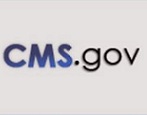 The following is email communication from CMS.
The following is email communication from CMS.
To help dispel some of the myths surrounding ICD-10, the Centers for Medicare & Medicaid Services (CMS) recently talked with providers to identify common misperceptions about the transition to ICD-10. These five facts address some of the common questions and concerns CMS has heard about ICD-10:
- The ICD-10 transition date is October 1, 2015.
The government, payers, and large providers alike have made a substantial investment in ICD-10. This cost will rise if the transition is delayed, and further ICD-10 delays will lead to an unnecessary rise in health care costs. Get ready now for ICD-10. - You don’t have to use 68,000 codes.
Your practice does not use all 13,000 diagnosis codes available in ICD-9. Nor will it be required to use the 68,000 codes that ICD-10 offers. As you do now, your practice will use a very small subset of the codes. - You will use a similar process to look up ICD-10 codes that you use with ICD-9.
Increasing the number of diagnosis codes does not necessarily make ICD-10 harder to use. As with ICD-9, an alphabetic index and electronic tools are available to help you with code selection. - Outpatient and office procedure codes aren’t changing.
The transition to ICD-10 for diagnosis coding and inpatient procedure coding does not affect the use of CPT for outpatient and office coding. Your practice will continue to use CPT. - All Medicare fee-for-service providers have the opportunity to conduct testing with CMS before the ICD-10 transition.
Your practice or clearinghouse can conduct acknowledgement testing at any time with your Medicare Administrative Contractor (MAC). Testing will ensure you can submit claims with ICD-10 codes. During a special “acknowledgement testing” week to be held in June 2015, you will have access to real-time help desk support. Contact your MAC for details about testing plans and opportunities.
Visit the CMS ICD-10 website for the latest news and resources to help you prepare.
